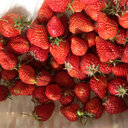Elemene inhibits the migration and invasion of 4T1 murine breast cancer cells via heparanase.
Avainsanat
Abstrakti
Elemene (ELE), a natural plant drug extracted from Curcumae Rhizoma, has been widely used for cancer treatment in China for more than 20 years. Although it is reported to be a broad‑spectrum anticancer drug, the mechanism underlying the action of ELE in the treatment of breast cancer remains to be fully elucidated. Heparanase, a mammalian endo‑D‑glucuronidase, is involved in degradation of the extracellular matrix (ECM), and thus promotes tumor progression and metastasis. The downregulation of heparanase can effectively reduce tumor malignant behaviors. In the present study, the inhibitory effects of ELE were evaluated in breast cancer cells using a Cell Counting kit 8 assay. The migratory and invasive capabilities of cancer cells were investigated using a wound healing assay, real‑time cell analysis and a Transwell assay. In addition, western blot analysis was used to assess alterations in the expression levels of key proteins. The present results confirmed the antiproliferative and antimetastatic effects of ELE, using low‑molecular weight heparin (LMWH) as a positive control. In addition, ELE was demonstrated to downregulate the expression of heparanase, and decrease the phosphorylation of extracellular signal‑regulated kinase and AKT. These findings suggested that ELE may be a promising agent targeting heparanase in the treatment of breast cancer.




